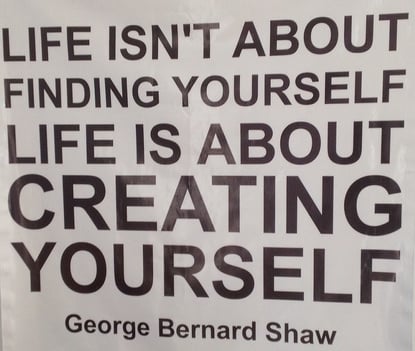What personal success strategies do high performers employ to get and stay ahead in business?
Morton T. Hansen, a business professor at the University of California, Berkley, tackles that question in a new book: Great at Work: How Top Performers Do Less, Work Better, and Achieve More. (affiliate link)
According to Hansen's article about the book in The Wall Street Journal, and based on a multi-year study of five thousand business people, the key difference in personal success strategies is the ability to be selective in taking on priorities and activities. High performers narrow the range of assignments they address and pour themselves into initiatives with intensity.
Four Personal Success Strategies for High Performers

Hansen lists four behaviors and perspectives to support selectivity for high performers:
- Reducing and simplifying activities
- Making specific trade-offs relative to new priorities
- Basing their work around value creation
- Innovating work process through varied strategies
These four personal success strategies provide a menu from which to improve your personal and team performance.
1. Simplifying Processes and Activities
Hansen discusses simplification and doing as few things as possible as important success factors. As he describes the strategy, it entails doing, “as few (things) as you can, as many as you must.”
One way to separate activities and priorities that deserve attention from those that don’t is through determining:
- How much ability you possess to change something
- The degree to which there is a return associated with a positive change.
Being able to make a big change with a significant return suggests an initiative to prioritize. To operationalize the strategy, we employ these questions:
- Who is this initiative very important to, and how do they reward high performance?
- Who would notice the impact of ignoring this?
- At what point will the standards of everyone that matters already have been surpassed?
Within an organizational setting, there is a tendency to over-engineer simple. The simple way to simplify is to aim for as few moving parts as possible.
2. Making Trade-Offs with New Priorities
High performers are aggressive reprioritizers. In the face of new assignments and expectations, they say yes to the right things and no to things that will distract them and reduce performance.
One effective way to prioritize is to force yourself to make yes and no decisions. You can accomplish this by writing all your potential priorities on individual sticky notes. Place them on a wall or desk and select two priorities and compare them. Ask, “If I could only accomplish one of these priorities, which one is more important?” Place the priority you selected at the top of the wall or desk, with the other, lesser priority below.
Pick up another sticky note, asking the same question relative to the top-most sticky note. If the new sticky note is a more important priority, it goes on top, and the other moves down. If it’s not more important, keep moving down and asking the question (Is this one more important or is that one?) relative to each sticky note until it’s appropriately placed based on its importance.
This simple model provides a quick prioritization to help determine which priorities warrant focus when everything seems important.
3. Focusing on Value Creation
Concentrating on high-value-creation activities is another element setting high performers apart from others. Instead of checking every box on a to-do list, these individuals concentrate on activities where they can deliver the greatest value for internal and/or external customers.
Part of understanding value creation is being in touch with customers to stay abreast of how THEY perceive and prioritize value. Absent this knowledge, you run the risk of spending time and attention on activities of lesser importance.
We recommend asking three questions to identify value opportunities. You may answer them yourself, but they take on tremendous importance when those you serve provide input, so we encourage you to ask them, too.
- What do I deliver that provides tremendous value for others?
- What do I deliver that doesn’t provide real value for others?
- What do I focus on that has the potential for tremendous value, but falls short because of too little attention or focus?
Answers to the first and second questions should re-confirm the priorities from the previous trade-off exercise. Answers to the third question highlight areas that perhaps can become priorities through eliminating the distractions you identify in question two.
4. Innovating Processes
Hansen found that one way high-performing individuals add value is through improving processes that lead to high performance for others. You can use the priorities providing tremendous value as a starting point to look for innovation opportunities to enhance value to upstream and downstream individuals in your work processes.
For those upstream in the process, think through the view, style, and expertise this person will put into the work product for which you’ll assume responsibility. Identify where you can provide actionable feedback to better coordinate the activities between you.
For those after you in a process, identify what they expect from you. How can you anticipate what they may struggle with to help them work through challenging parts more successfully?
Enhancing Your Personal Success Strategy
Based on Hansen’s work, simplifying, prioritizing, maximizing value, and innovating are vital personal success strategies to lead you to high performance. Does that match your formula? - via Inside the Executive Suite




